UAE Internet Slowdown 2025: Red Sea Cable Cuts and How Dubai Stayed Online
Undersea fibre cuts in the Red Sea disrupted global routes between Asia, the Middle East, and Europe. So why did internet in the UAE still feel fast? Here’s what really happened — and what Dubai businesses can do to stay online during any future slowdown.
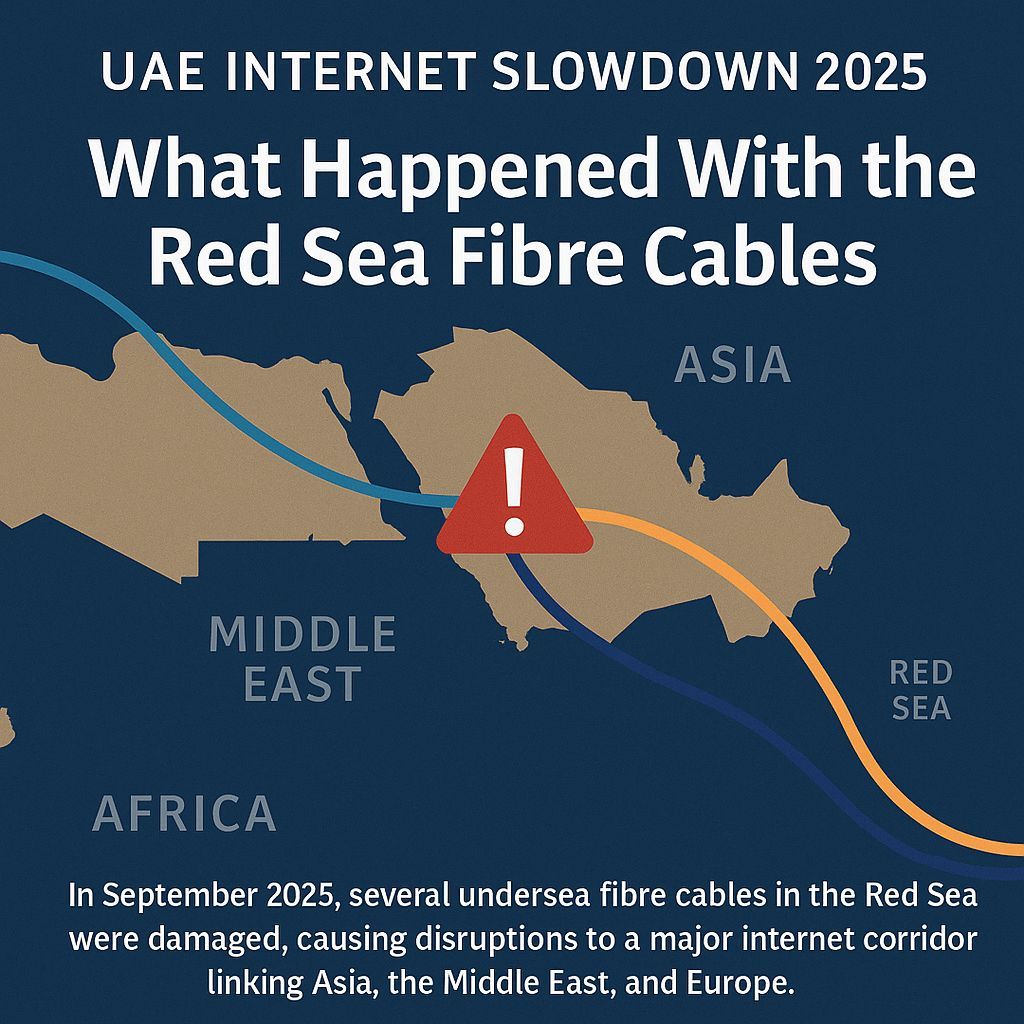
What Happened With the Red Sea Fibre Cables
In September 2025, several undersea fibre cables in the Red Sea were damaged, causing disruptions to a major internet corridor linking Asia, the Middle East, and Europe. Telecom providers warned of a possible UAE internet slowdown, higher latency, and connectivity degraded across some routes. The estimated repair timeframe was reported as two to six weeks, depending on access and repair conditions.
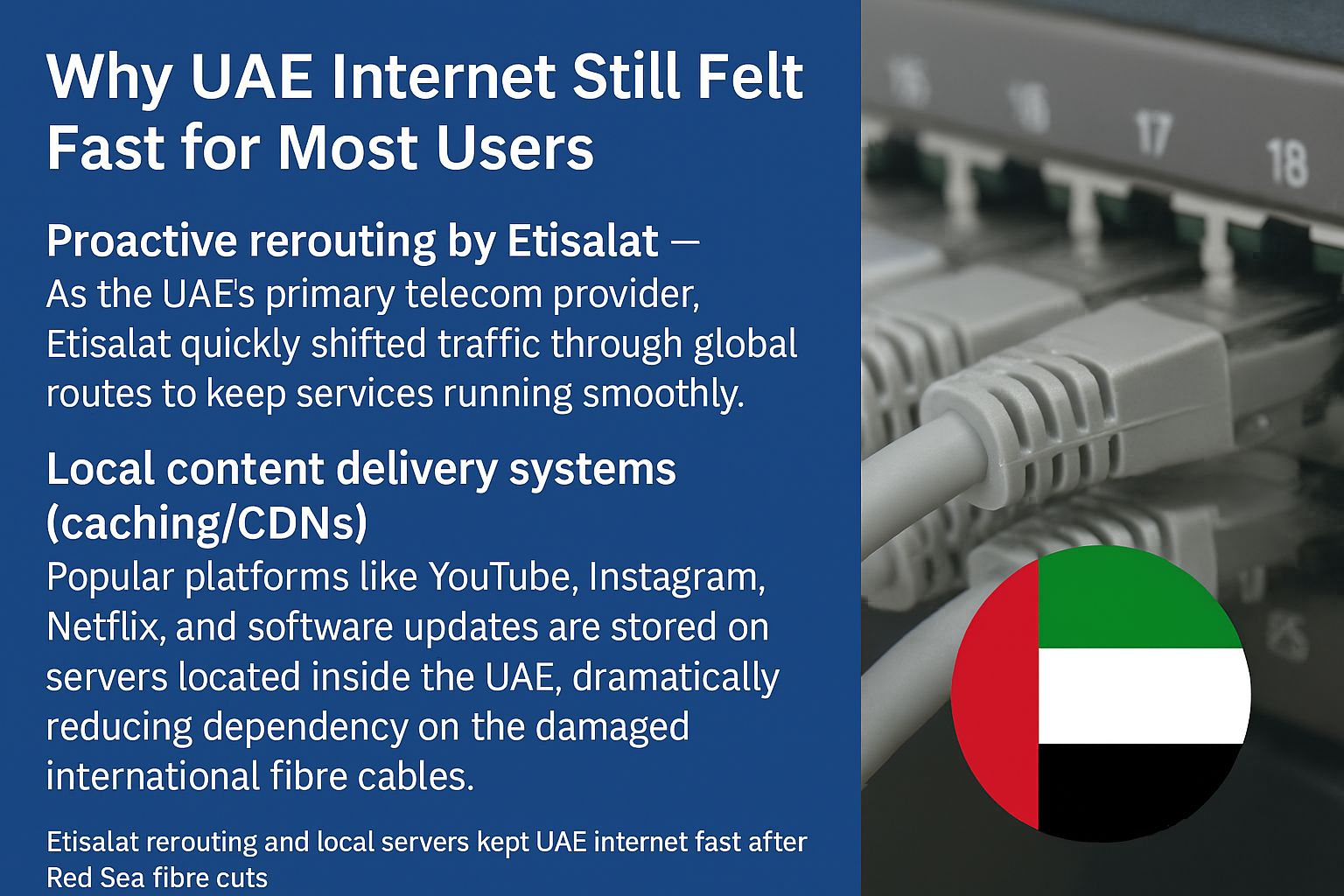
Why UAE Internet Still Felt Fast for Most Users
Despite warnings of a potential UAE internet slowdown, many people in Dubai noticed little impact. The reason came down to two key factors:
- Proactive rerouting by Etisalat — As the UAE’s primary telecom provider, Etisalat quickly shifted traffic through alternate global routes to keep services running smoothly.
- Local content delivery systems (caching/CDNs) — Popular platforms like YouTube, Instagram, Netflix, and software updates are stored on servers located inside the UAE, dramatically reducing dependency on the damaged international fibre cables.
Together, these measures ensured that everyday browsing, streaming, and business use remained fast and reliable — even while global infrastructure was under pressure.

What a ‘Slowdown’ Really Looks Like
A slowdown isn’t the same as a blackout. In most cases, it means:
- Higher latency to certain regions (especially Europe and South Asia).
- Slight buffering on video calls or live streaming.
- Slower large file transfers between continents.
Everyday browsing, streaming, and social media stayed fast because much of that content came from local cache servers rather than across damaged cables.
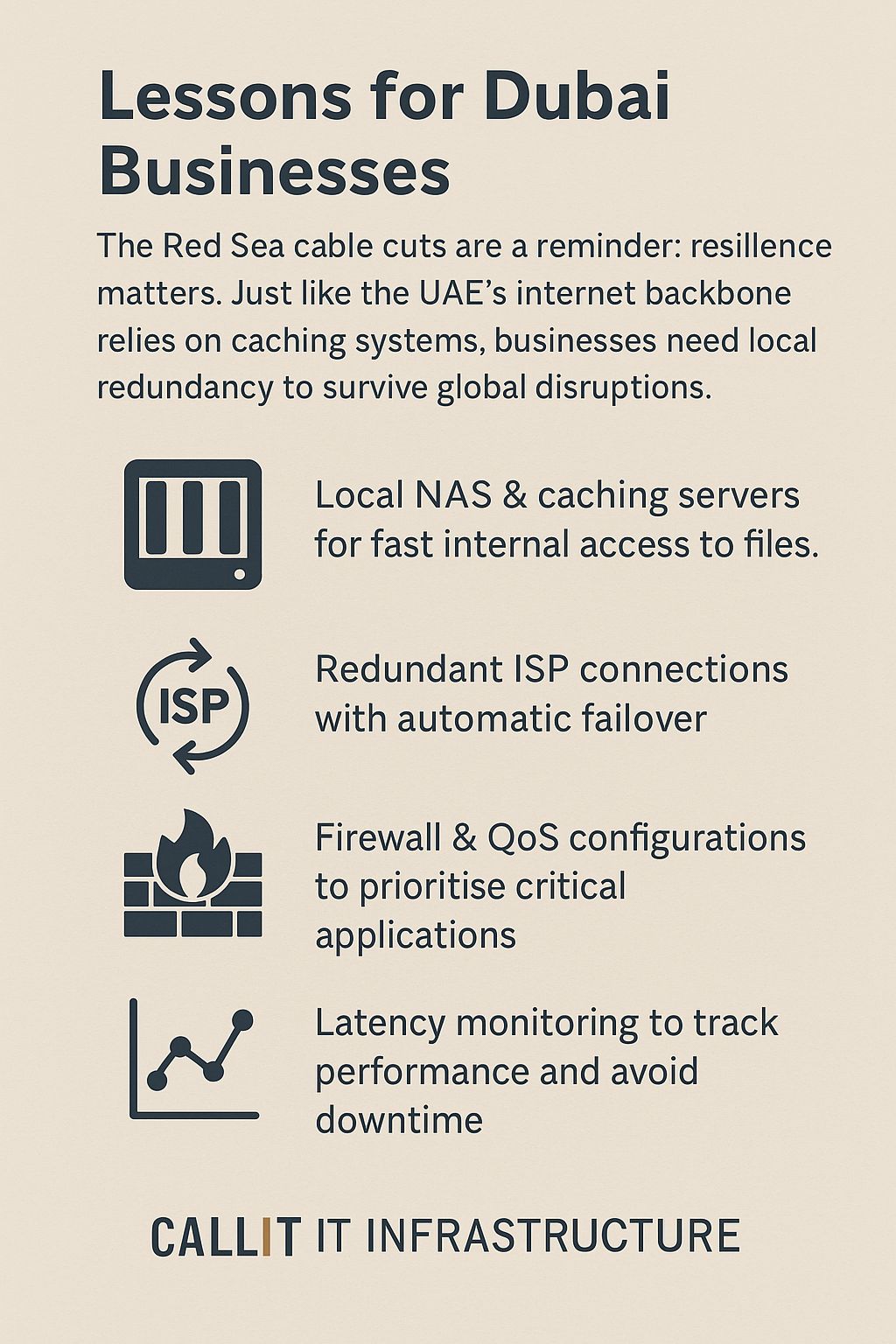
Lessons for Dubai Businesses
The Red Sea cable cuts are a reminder: resilience matters. Just like the UAE’s internet backbone relies on caching systems, businesses need local redundancy to survive global disruptions.
At CALLIT IT INFRASTRUCTURE, we help companies in Dubai stay online with:
- Local NAS & caching servers for fast internal access to files.
- Redundant ISP connections with automatic failover.
- Firewall & QoS configurations to prioritise critical applications.
- Latency monitoring to track performance and avoid downtime.
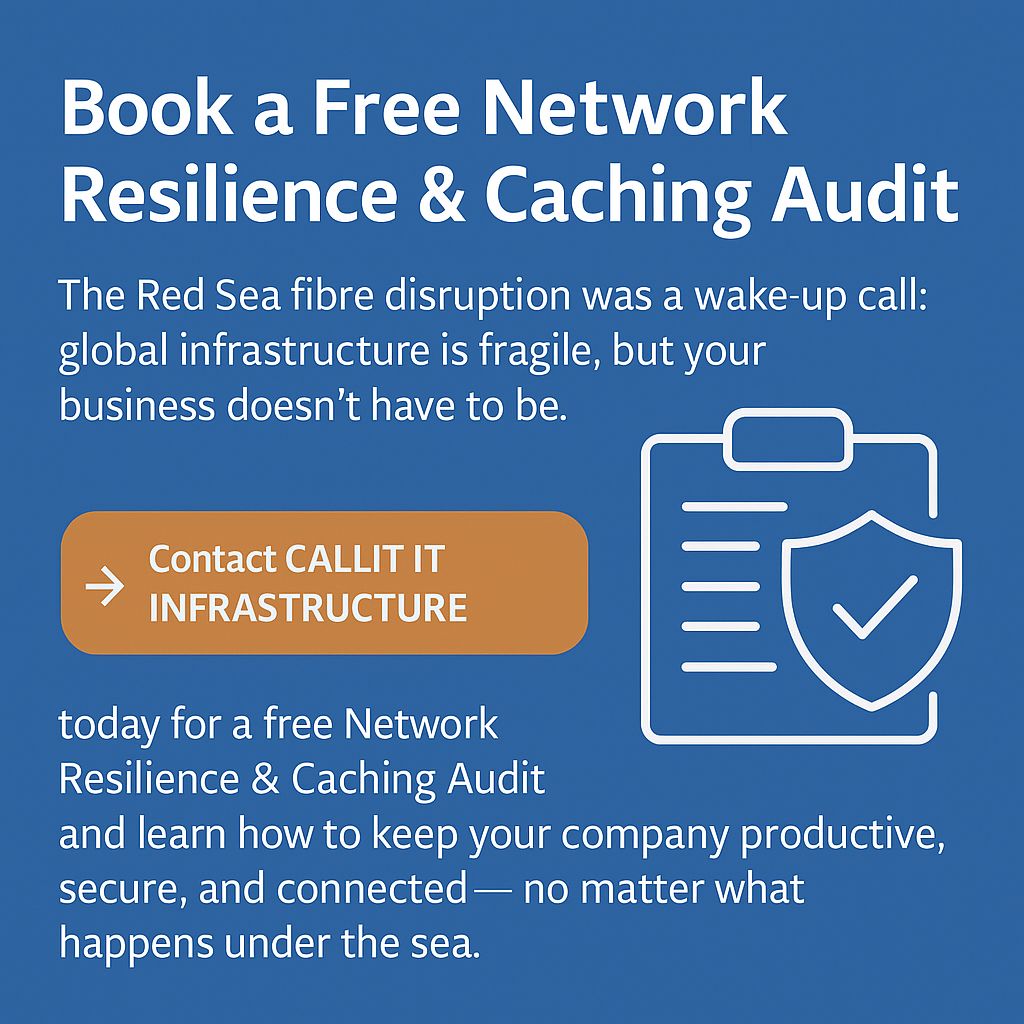
Book a Free Network Resilience & Caching Audit
The Red Sea fibre disruption was a wake-up call: global infrastructure is fragile, but your business doesn’t have to be.
👉 Contact CALLIT IT INFRASTRUCTURE today for a free Network Resilience & Caching Audit and learn how to keep your company productive, secure, and connected — no matter what happens under the sea.
